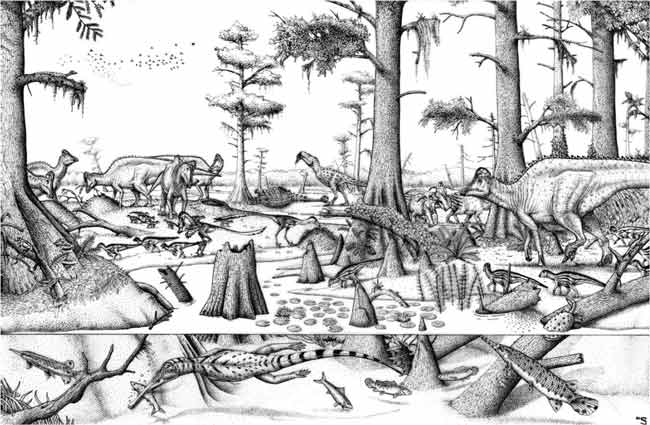Dinosaur Graveyard Suggests Feeding Frenzy

Fossilized remains of a feeding frenzy show how a raptor-like dinosaur snacked on baby plant-eating dinosaurs some 73 million years ago in northwestern Alberta.
The discovery of the site took place near Grande Prairie, 280 miles (450 km) northwest of Edmonton, Canada.
Two paleontologists came across a nesting site and found the remains of baby, plant-eating dinosaurs and the teeth of a predator. The researchers matched the teeth to a Troodon, a raptor-like dinosaur about 6 feet (2 meters) in length. The finding could open new doors for dinosaur research on this part of the continent.
"It established that dinosaurs were nesting at this high latitude," said Tetsuto Miyashita, a paleontology researcher at the University of Alberta. "It also shows for the first time a significant number of Troodons in the area [who] hunted hatchling dinosaurs."
Over the course of two summers of field work, Miyashita and Frederico Fanti, a paleontology researcher from Italy, began building a theory that Grande Prairie is a "missing link" between known dinosaur species that existed much further to the north and south.
"Prior to this there were no localities with a variety of dinosaurs and other animals between Alaska and southern Alberta," Myiashita said. The list of new finds for the area includes armoured and thick-headed plant eaters and fossilized freshwater fish and reptiles.
Miyashita noted that this small pocket of previously undiscovered life could have had interactions that lead to the evolution of new species.
Get the world’s most fascinating discoveries delivered straight to your inbox.
"New dinosaurs weren't created by interbreeding," Miyashita said. "Having a variety of dinosaurs in one area creates new ecological interactions such as competition for food and predation.
"That can lead to the evolution of a new species."
One Grande Prairie dinosaur the researchers suspect is a new species is the Duck bill. Miyashita said that, unlike the Duck bill found further north in Alaska, the Grande Prairie has a visible bump or crest on its forehead.
The pair of researchers will go back to Grande Prairie area in 2010 to focus on finding other dinosaur species in the area
- Images: Dinosaur Fossils
- Greatest Mysteries: What Causes Mass Extinctions?
- All About Dinosaurs



